Xiaoqikong (Seven Small Arches) Scenic Area, Libo – Ticket, Opening Hours, Location, and Highlights
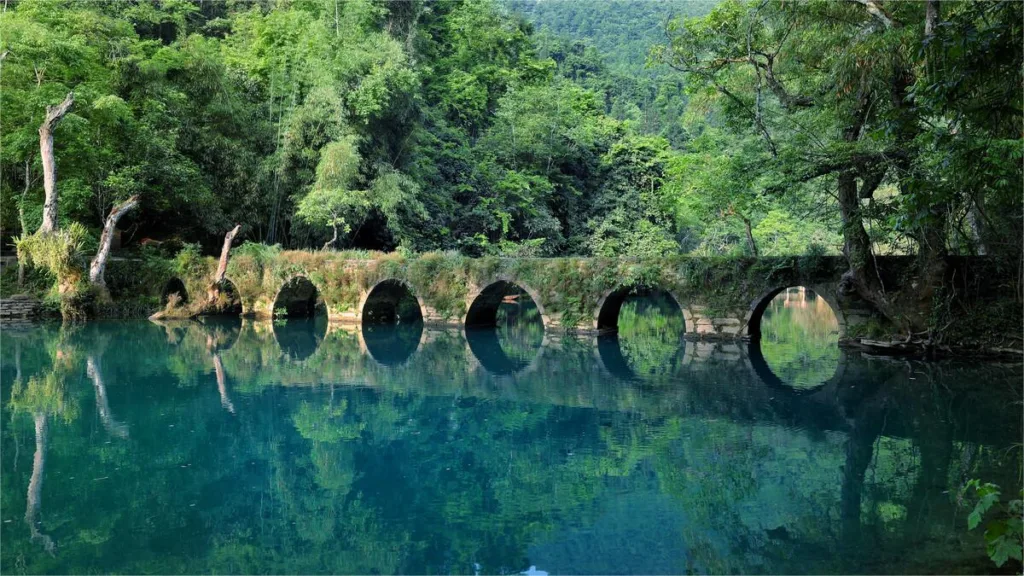
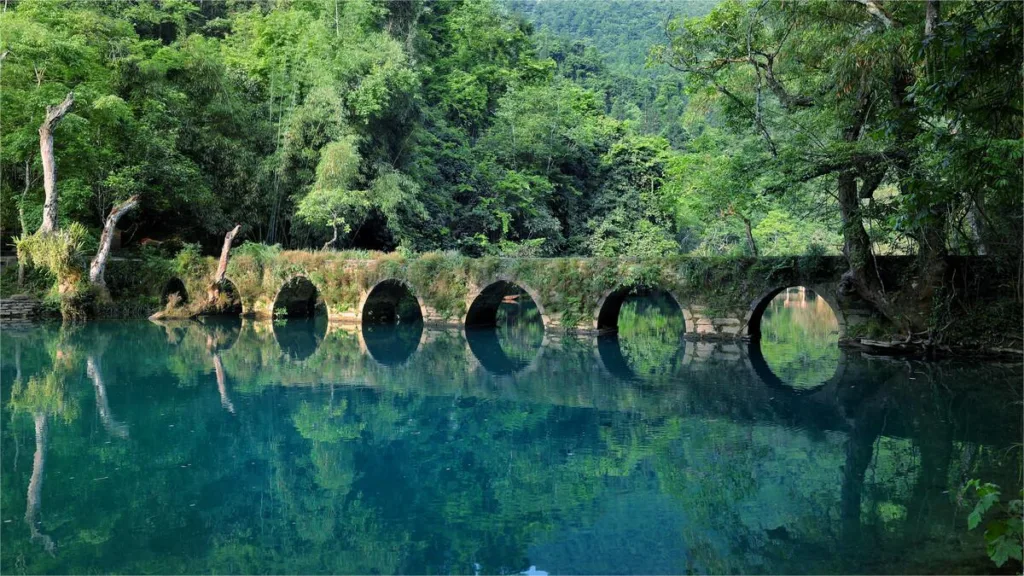
Xiaoqikong Scenic Area (小七孔风景区), also known as Seven Small Arches Scenic Area, is located in Libo County, Guizhou Province, spanning a total length of 7 kilometers. The name originates from a seven-arch stone bridge that gracefully spans the Xiangshui River. This area seamlessly integrates mountains, water, forests, caves, lakes, and waterfalls, creating a picturesque and tranquil landscape. Enriched by the vibrant culture of the Yao ethnic minority, Xiaoqikong has become a prominent tourist destination in the Qiannan Autonomous Prefecture.
The ancient Xiaoqikong Bridge, constructed in the 15th year of the Qing Dynasty’s Daoguang era (1835), was initially named Wan Gu Xing Bridge. With seven small arches on its bridge body, it acquired the local nickname “Xiaoqikong Ancient Bridge.” The bridge, measuring 40 meters in length, 2.2 meters in width, and standing at a height of 5.5 meters, is adorned with climbing vines and ferns and surrounded by ancient trees on both banks. It embodies historical significance as a key transportation route from Qiannan to Guangxi in times past.
Índice
- Información básica
- Ubicación y transporte
- Highlights of Xiaoqikong Scenic Area
- Vlog about Xiaoqikong Scenic Area
- Consejos útiles resumidos a partir de reseñas
- Otras atracciones en Libo
Información básica
| Duración estimada de la visita | Media jornada |
| Precio del billete | 170 RMB |
| Horario de apertura | 8.00 - 16.30 |
| Número de teléfono | 0086-0854-3516116 |
Ubicación y transporte
Xiaoqikong Scenic Area is situated adjacent to the Mengliu Folk Town in Libo County, Qiannan Buyi and Miao Autonomous Prefecture, Guizhou Province, China. It is nestled within the mountainous terrain approximately 30 kilometers south of the county center of Libo.
Travelers can board a long-distance bus at Guiyang Passenger Station, heading to Libo as the first stop. Upon reaching Libo, transfer to a tourist shuttle that directly takes you to the entrance of Xiaoqikong Scenic Area.
Alternatively, there are direct shuttle services from Guiyang’s tourist hub to Xiaoqikong Scenic Area. However, these shuttle services may have fewer departure times compared to the regular bus option.
Highlights of Xiaoqikong Scenic Area
Yuan Yang Lake
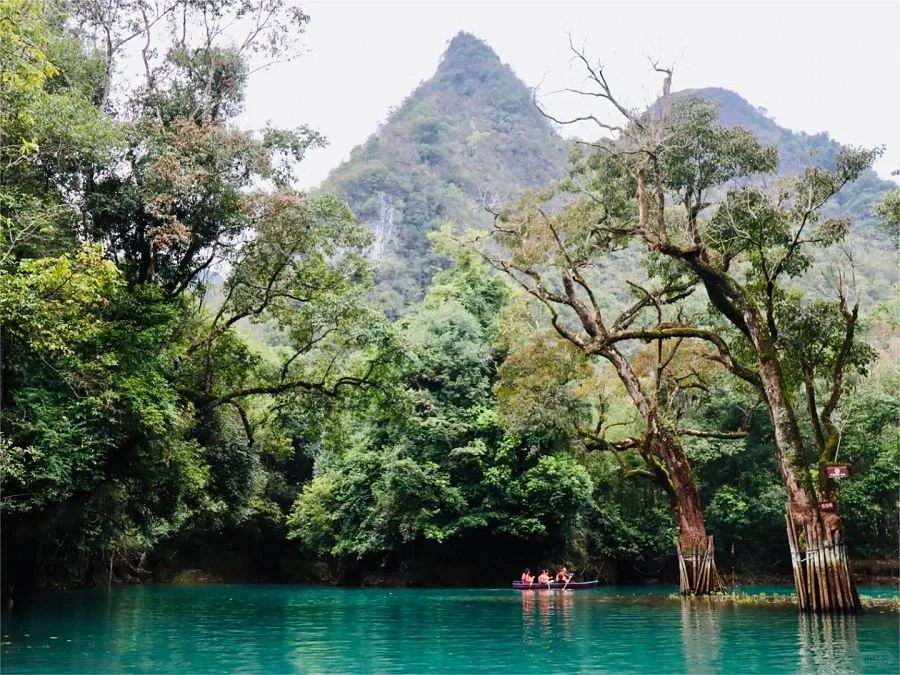
Yuan Yang Lake is a mesmerizing wonder in Xiaoqikong Scenic Area, featuring calm, mirror-like waters that exhibit a deep emerald hue. Its name, translating to “Mandarin Duck Lake,” is derived from two towering trees standing side by side in the lake. These magnificent trees half-submerge into the water, with their branches intertwining above. The female tree is delicate, while the male tree stands grand and sturdy, requiring two or three people to encircle its girth. The lake’s serene surface is intersected by various water channels, surrounded by lush vegetation in multiple layers. The vibrant greenery is punctuated by splashes of red and pink flowers, creating a picturesque scene.
Wild Boar Forest

The Wild Boar Forest is a prime example of a karst funnel forest, where dense layers of vegetation cover the landscape from the bottom of the funnel to the mountain ridges above. Hundreds of acres of green bamboo intermingle with other trees at the funnel’s base. The entire funnel resembles a green vortex, swirling above the forest canopy. Along the small ditch at the bottom of the funnel, all the trees incline toward the center. Every tree is draped in tufted pine moss, resembling wild hair from a distance, creating an enchanting spectacle akin to a forest giant.
Cascade Waterfalls

In the narrow mountain valley upstream of Hanbi Pond, there are 68 levels of cascading waterfalls. These waterfalls tumble down in layers, resembling a celestial river pouring down, each with its unique form. The dynamic water scenery captivates visitors, presenting an overwhelming visual feast. Ascending along the river valley, surrounded by tiered waterfalls, visitors are treated to a picturesque journey featuring high mountains, flowing streams, verdant trees, and colorful flowers, accompanied by the soothing sounds of bubbling springs and singing birds. The natural beauty of the Cascade Waterfalls adds an extra layer of awe to the Xiaoqikong Scenic Area experience.
Turtle Back Mountain
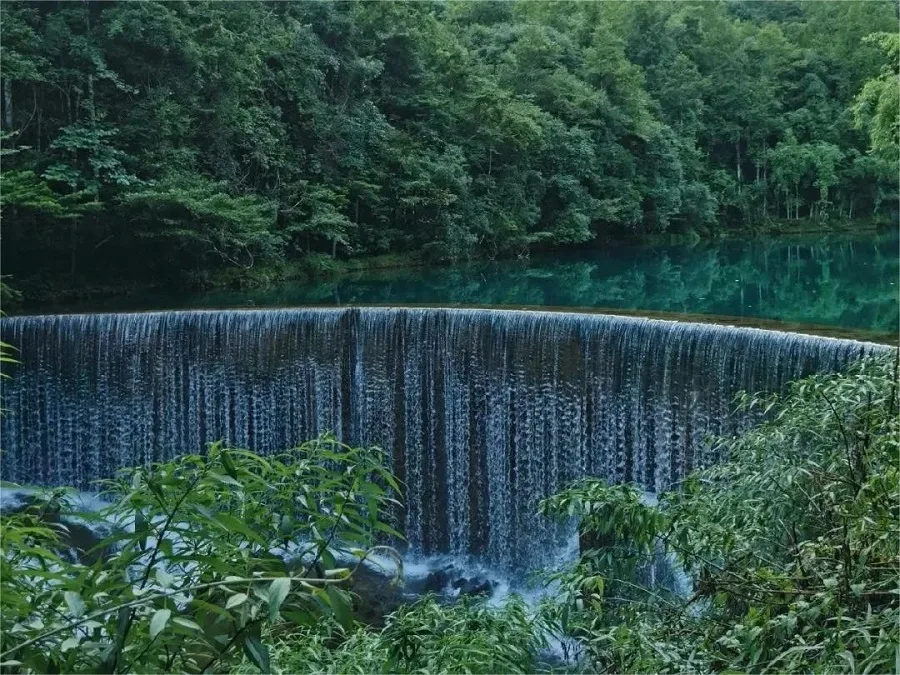
Turtle Back Mountain earns its name from the abundance of Turtle Back Bamboo that wildly grows across its slopes. The mountain features rugged rocks, bizarre stone formations, and towering ancient trees, entwined with climbing vines. Three notable wonders characterize this mountain: firstly, the ancient vines winding through the forest resemble intricately hand-twisted hemp ropes, creating a peculiar and fascinating sight; secondly, at the upper entrance of the mountain, there is a tree root, as thick as a bowl’s mouth, extending along the path for several dozen meters, resembling a moving giant python, leaving visitors astonished; and thirdly, within the forest, there is a massive rock suspended in mid-air, supported by three stone pillars. Remarkably, atop this hanging rock grows a National Second-Level Protected Plant— a more than ten meters tall Chinese sweet gum tree (Liquidambar formosana), adding an element of surprise to the scenery.
Water Forest
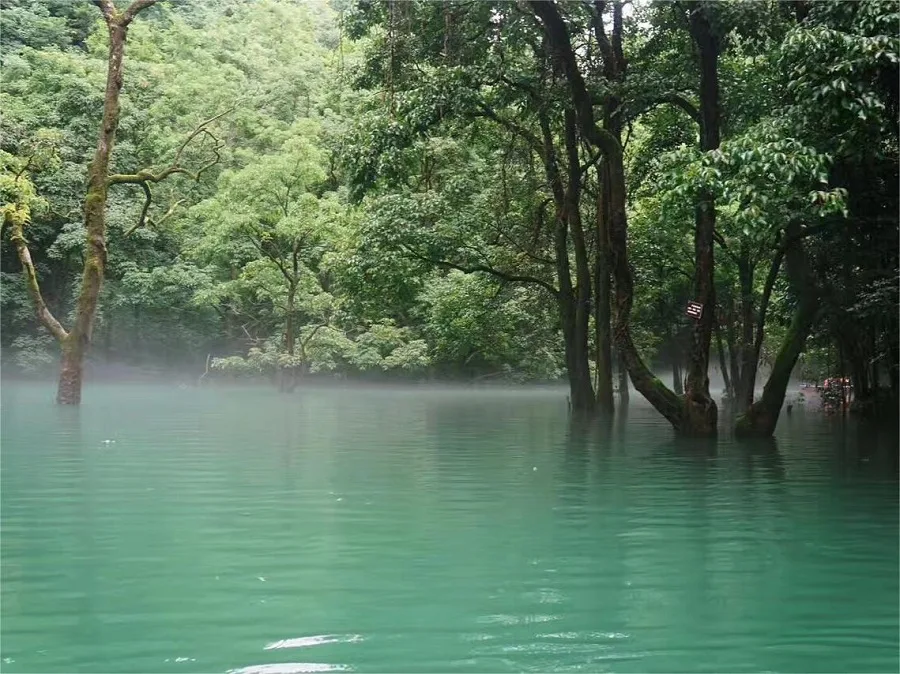
Stretching approximately 600 meters in two sections, the Water Forest forms a vibrant green barrier with dense trees and shrubs along the river valley. Clear river water cascades through the mixed woodlands. The constant erosion over the years has polished the riverbed, leaving it devoid of sediment, with even the boulders becoming smooth. The trees, firmly rooted in the riverbed, remain steadfast, creating a perpetual greenery along the riverbank.
Laya Waterfall
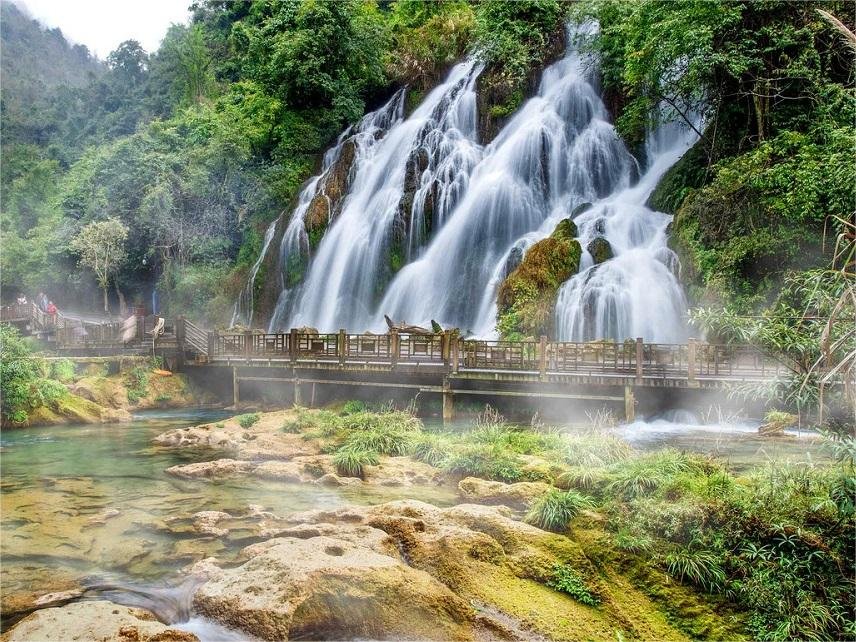
A mere hundred meters beyond the Xiaoqikong Bridge lies the Laya Waterfall. “Laya” in the Buyi language translates to “beautiful maiden.” The waterfall, with a width of 10 meters and a drop of over 30 meters, embodies the colorful culture of the Buyi ethnic group, enhancing the charm of Xiaoqikong Scenic Area. If Huangguoshu Waterfall is metaphorically described as a tall and robust adult male, then Laya Waterfall is the graceful and beautiful maiden, adding a touch of elegance and allure to the landscape.
Tonggu Bridge (Copper Drum Bridge)
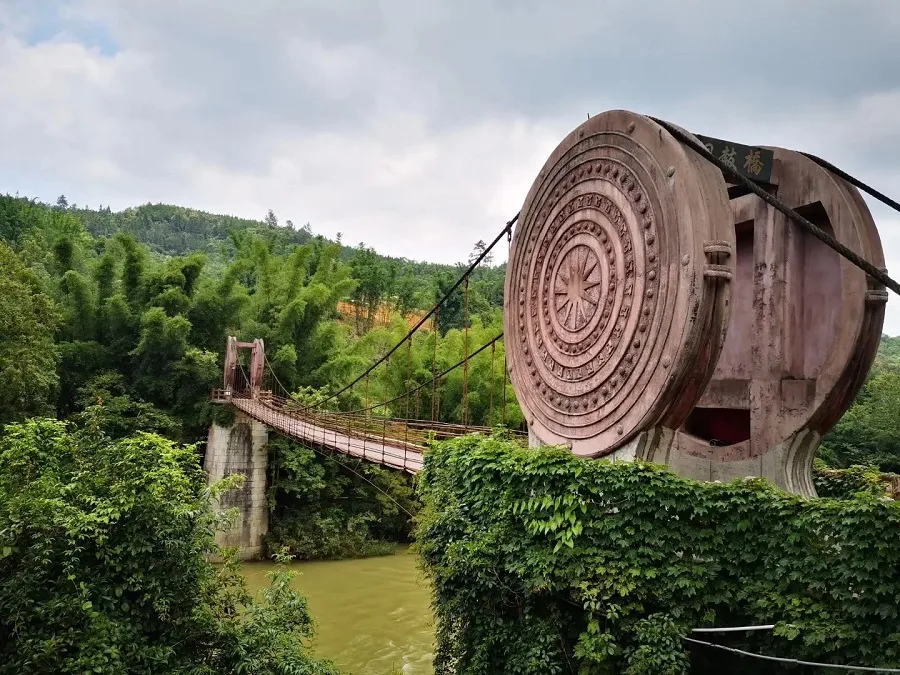
At the eastern entrance of Xiaoqikong Scenic Area stands the magnificent Tonggu Bridge, spanning the Zhangjiang River. Constructed in 1993, this bridge is 126 meters long, with a clear span of 60 meters, a width of 2.4 meters, and a height of 25 meters. The bridge’s distinctive feature lies in the copper drum-shaped structures at both ends, crafted by the Yao people of Yaoshan. Hence, it is aptly named “Tonggu Bridge.” The Yao people consider the copper drum a divine gift, a treasure that symbolizes power within their village.
Natural Bridge

The Karst Natural Bridge, stands at a height of 73 meters, with a thickness of 15 meters and a width of approximately 22 meters. Majestic and grand, the stone bridge is complemented by the tumultuous river water cascading into a 2-meter waterfall beneath it. The bridge’s surface is adorned with speckles of stalactites, while the surrounding vegetation seamlessly integrates with the mountains on both sides. The Natural Bridge, often referred to as the “Eastern Triumphal Arch” sculpted by the forces of nature, is a breathtaking spectacle.
Yao Village

Within the scenic area, Yao Village is home to two Yao groups: the Two-Piece Yao and the White Trouser Yao. The distinguishing factor lies in their attire; women from the Two-Piece Yao group wear a two-piece upper garment that connects only at the shoulders and waist, while the White Trouser Yao derive their name from wearing white trousers. In the village, you can witness women engaging in collective weaving activities. During market days, the slaughtering of cattle is a common scene, with the organs displayed for sale, and cattle blood transformed into delicious blood tofu, a local delicacy. The cattle meat, cut into chunks, sells out by the end of the day, showcasing the vibrant and traditional life within the Yao Village.
Vlog about Xiaoqikong Scenic Area
Consejos útiles resumidos a partir de reseñas
Tour Route: There are two main routes to explore the Xiaoqikong Scenic Area:
- West Gate Route: This route includes attractions like Wolong Lake, Mandarin Duck Lake, Cuigu Waterfall, Water Forest, Stone Forest, and the Ancient Bridge of Xiaoqikong. Visitors can return by sightseeing car or continue to the East Gate.
- East Gate Route: This route focuses on the Big Seven-Hole Scenic Area and the Ancient Bridge of Xiaoqikong.
Transportation within the Scenic Area: While there are sightseeing cars available between each attraction within the scenic area, be prepared for some walking within the attractions themselves. Comfortable footwear is recommended to avoid fatigue.
Traiga su propia comida: Consider bringing your own snacks or packed meals, as the food available within the scenic area can be expensive and of poor quality according to reviews.
Opciones de transporte: If you decide to return to Guiyang East Railway Station, there are direct buses available at the entrance of the scenic area. The last bus typically departs at 20:00, and the fare is around 220 yuan per person.
Consigna de equipajes: Note that there are no luggage storage facilities at Libo Station. However, there’s a bus station opposite where you can store your luggage for 20 yuan per piece. If you purchase a bus ticket from this station, luggage storage may be free. Nearby convenience stores might also offer storage services for a lower price (around 10 yuan per piece).
Otras atracciones en Libo
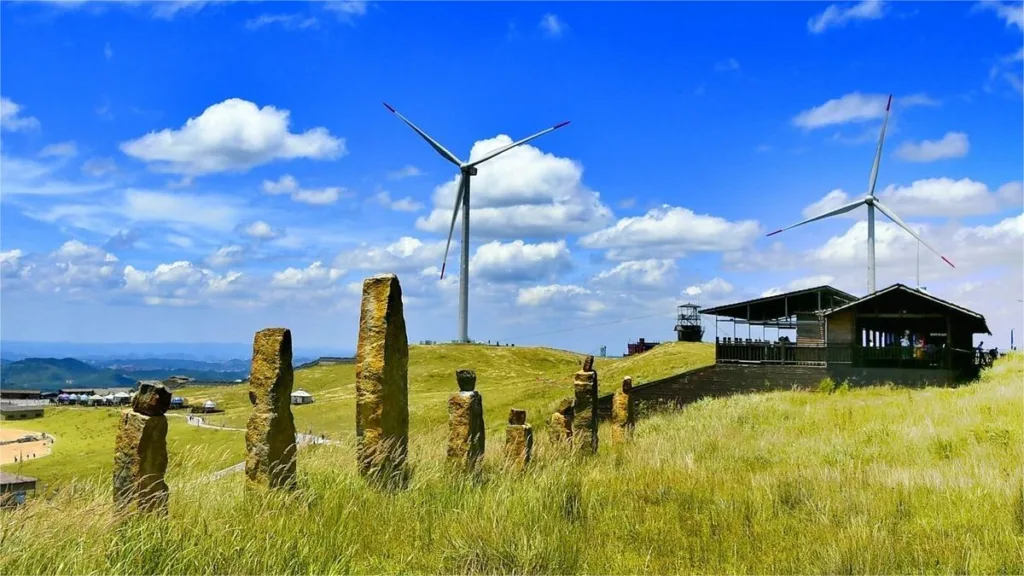
Pradera de Longli

Zona panorámica del río Shuichun
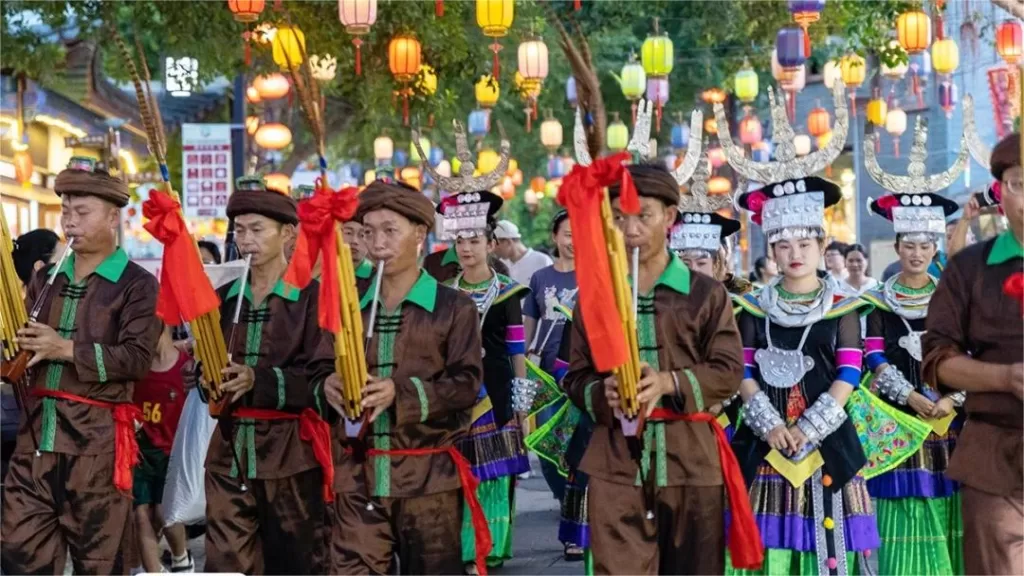
Antigua ciudad de Libo

Reserva Natural Nacional de Maolan

Yaoshan Ancient Village
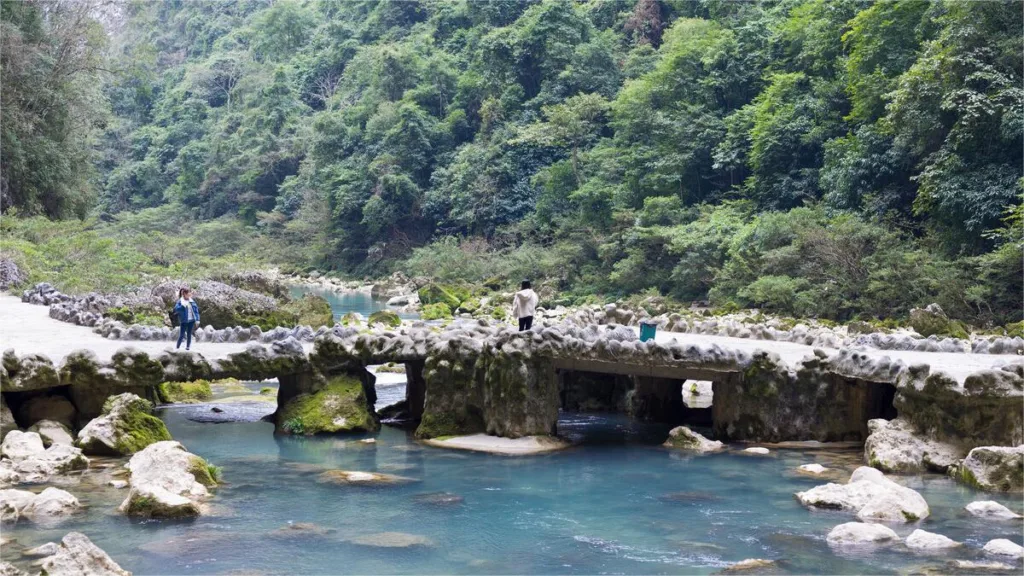
Zona escénica de Daqikong
Paisajes de Guizhou, Atracciones de Qiannan